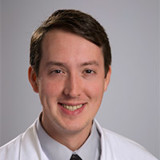
An estimated 795,000 people suffer a stroke each year in the U.S., which remains a leading cause of long-term disability. The past 25 years have seen the implementation of several interventions capable of reversing the effects of acute stroke. The first of these was tissue plasminogen activator (tPA), which breaks up blood clots, and is widely available. More recently mechanical thrombectomy, in which a catheter is used to physically pull out the clot, has been deployed in specialized stroke centers for certain types of stroke.
The key concept underlying the use of both tPA and thrombectomy is that time equals brain. Faster removal of the clot results in the return of blood flow and potentially decreases damage to the brain caused by the stroke. Based on the initial clinical trials, tPA could only be given within a 3-hour window after the onset of stroke symptoms; the time window was slightly longer for thrombectomy at six hours. Subsequent experience and clinicals trials have expanded the time window for both interventions with the understanding that sooner treatment results in better outcomes.
Despite these advances in the treatment options available to treating physicians, fewer than 15% of patients with acute ischemic stroke receive tPA; fewer are thought to undergo thrombectomy. A primary driver of this disuse is the time delay between the onset of stroke symptoms and when patients are assessed for treatment. One approach to address this delay involves optimization of the evaluation and treatment process, as exemplified by the Target: Stroke program sponsored by the American Heart Association.
An alternate approach is to utilize mobile stroke units (MSUs) to bring the stroke team and tPA to the patient. These specially=outfitted ambulances contain portable CT scanners, a point-of-care laboratory, and telemedicine capabilities that allow for immediate communication with hospital specialists. Rather than wait to start tPA until arrival at the hospital, MSUs allow treatment to be started as soon as the diagnosis of stroke is made. MSUs were first deployed in Germany starting in 2008 and, following those initial successes, have been rolled out in various cities across the United States. Depending on the study, the use of MSUs has been reported to result in tPA being delivered 10 to 60 minutes sooner.
The potential benefits of delivering acute stroke treatment with MSUs are complicated by various practical limitations including initial cost, subsequent maintenance, and staffing. In dense metropolitan areas such as New York City, where several hospitals are located close to one another, there may be limited benefits of treatment with an MSU as opposed to use of standard emergency services for transport to a hospital. An analysis of MSU data collected in Manhattan by Kummer and colleagues recently published in the Journal of the American Heart Association was undertaken to address this question. They report that that use of an MSU resulted in tPA being provided an average of 30 minutes sooner than occurred using standard emergency services.
While these results fit within the range of times reported previously in the literature, there are some concerns related to this particular study. Most notably, only 66 patients were treated by the MSU during the one-year period under analysis (85 met the criteria but 19 were not transported by MSU). This may reflect practical limitations to MSU use (business hours during the week) rather than a dearth of strokes in Manhattan. One wonders if the time benefit will hold up as additional patients are treated and included in the METRONOME registry.
At least in Manhattan, the presence of nearby stroke hospitals did not impact upon the faster delivery of acute stroke treatment on a MSU. This becomes less of a concern for most other metropolitan centers, which have fewer designated stroke centers spread out over larger geographic regions, and therefore the results of this study are unlikely to change clinical practice with regards to the use of MSUs.
As a neurologist specializing in rehabilitation after stroke, I do not deliver care via MSU but I do treat those patients once their acute hospital stay is complete. I welcome any intervention that results in less disability at the time patients are admitted for rehabilitation and look forward to following the trends in recovery for patients that receive early acute stroke treatment.
Andrew Dorsch, MD, is an Assistant Professor in the Department of Neurological Sciences at Rush University Medical Center in Chicago. He is also a Public Voices Fellow with The OpEd Project.







